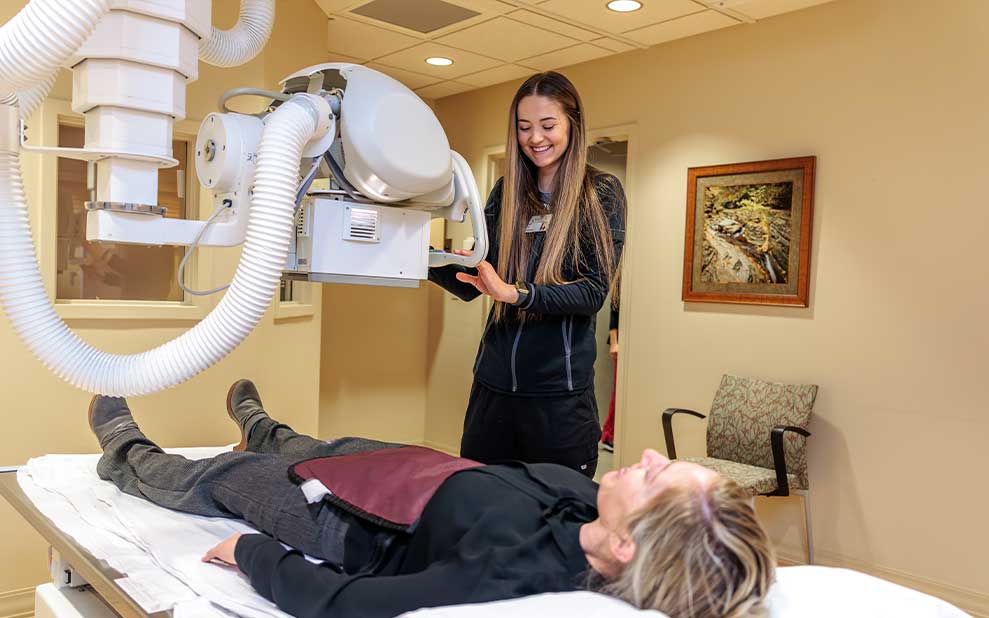X-Ray
X-ray is the oldest and most frequently used form of medical imaging. X-rays produce digital, diagnostic images of the human body and most commonly are used by doctors to view and assess the skeletal system for injury.


Benefits of Digital X-Ray
- Safer – less radiation than conventional X-rays
- Faster – takes less time because the technologist can preview your images in seconds
- Accuracy - Enhanced image quality
Common Uses of X-Ray
- Assist doctors in identifying and diagnosing of bone fractures.
- View, monitor or diagnose joint injuries and infections, arthritis, artery blockages, abdominal pain.
- Detection and diagnosis of cancer, although usually Computed Tomography (CT) or MRI is better at defining the extent and the nature of a suspected cancer.
- Bone Density Scan (DXA)
How to Prepare for an X-Ray
There is no special preparation required for most X-Rays. You may be asked to change into a gown prior to your examination and remove jewelry, eyeglasses and any metal objects during the exam. Women should always inform the technologist if there is any possibility that they are pregnant.
What to Expect During an X-Ray
- An X-ray exam is painless and usually takes 5-30 minutes.
- Some discomfort may result from lying on the table, a hard surface that may feel cold.
- Sometimes, to get a clear image of an injury such as a possible fracture, you may be asked to hold an uncomfortable position for a short time. Any movement could blur the image and make it necessary to repeat the procedure.
- The technologist positions you and places a cassette behind the area of the body to be imaged.
- Pillows or sponges may be used to help you hold the proper position.
- Then the technologist steps behind a radiation barrier and asks you to hold very still, sometimes without breathing for a few seconds.
- The X-ray equipment is activated, sending a beam of X-rays through the body to expose the cassette.
- The technologist then repositions you for another view, and the process is repeated as necessary.
- When your X-rays are completed, you will be asked to wait until the technologist checks the images.

 MRI
MRI CT
CT PET
PET Ultrasound
Ultrasound Women's Imaging
Women's Imaging X-Ray
X-Ray Bone Densitometry (DEXA)
Bone Densitometry (DEXA)